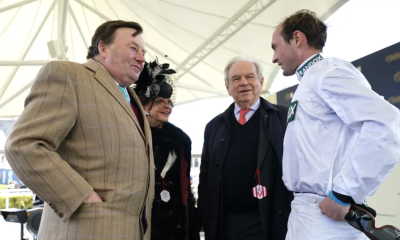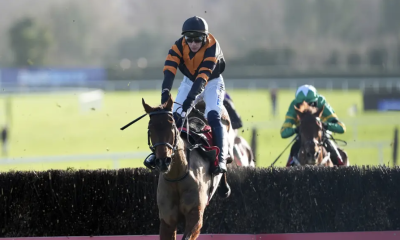The 2014 Grand National takes place on the 5th of April and it’s the one race that brings professional gamblers and casual punters together as millions are spent at the bookmakers. The bulk of the money is so far going on Teaforthree, which trades at 11.5 on Betfair, but the Grand National is an event where favouritism means very little.
As a race, it’s highly unpredictable but the one thing you can guarantee is plenty of drama. Here are five of the most memorable moments in Grand National history.
5. Red Rum hunts down Crisp
1973 was the first of Red Rum’s three historic victories and it’s easy to forget now that Brian Fletcher’s mount won the race in a record time. The eight year old needed all of his sprinting prowess as he jumped the final fence some 15 lengths behind the leader, Crisp.
What happened next is one of the most memorable scenes in Aintree history and the footage is likely to be repeated for as long as the race is held. Both horses were priced at 9/1 but Crisp was carrying a hefty 12 stone, a weight which has since been banned, and the leader’s stamina gave way on the run in.
By comparison, Red Rum was carrying a featherweight and as Crisp started to fade, Fletcher’s ride came through to edge him out by three quarters of a length.
4. Foinavon comes in at 100/1
Having a 100/1 winner in any race is a story in itself but that doesn’t come close to telling the full version of events behind this historic win. Jockey John Buckingham later revealed that he was third choice to ride Foinavon and as the horse lagged some way behind the rest of the field, you could understand the reluctance of the other two.
However, Foinavon’s lack of pace was crucial, as the pack came to the 23rd. A loose horse – Popham Down – had remained with the race to no ill effect but suddenly veered to the right, causing complete mayhem. Horses fell, riders were unseated and even those who remained in the saddle found their mounts were running in the opposite direction amidst the confusion.
Bringing up the rear, Foinavon was the only horse who could jump the fence unimpeded and Buckingham was left with a clear run to the line. Subsequently, the 23rd at Aintree is now known as the Foinavon fence.
3. 1993 the race that never was
At Aintree in 1993, John White stormed home on 50/1 shot Esha Ness but his celebrations were to be short-lived as he was told the horses had been recalled following a bizarre chain of events. The Grand National of that year had experienced problems before the off when a group of Animal Rights protestors invaded the course.
Normality was restored but a disastrous false start ended with many horses tangled up in the starting tape. The riders tried again but a second false start followed and with no recall flag visible, 30 of the 39 riders carried on.
Jockeys ignored genuine attempts to stop the race, believing that protestors has infiltrated the course once again, so it was left to White and Esha Ness to storm home with what would have been the second fastest time in Grand National history.
2. 1981 – Bob Champion’s emotional win
The Grand National of 1981 is remembered for jockey Bob Champion beating cancer to ride Aldaniti home but in fact, both horse and rider had made remarkable comebacks. Champion was diagnosed in 1979, aged just 31 and while he was told he may have only months to live, he harnessed his dream of winning the National to get him through those dark days.
That dream came true in partnership with Aldaniti, who had come through three career-threatening injuries to take a place in the field. Their story was so remarkable that it was made into the 1983 film ‘Champions’.
1. 1977 – Red Rum completes the hat-trick
After back-to-back wins in 1973 and 1974, Red Rum had to settle for second in each of the two following years and it seemed as if his best chance of a hat-trick had eluded him. By now, Red Rum was firmly established as the Nation’s favourite so it was an emotional Aintree that welcomed home the horse and his jockey Tommy Stack in 1977.
The win cemented Red Rum’s place in National history and following his death in 1995, the horse was buried at Aintree’s winning post.











